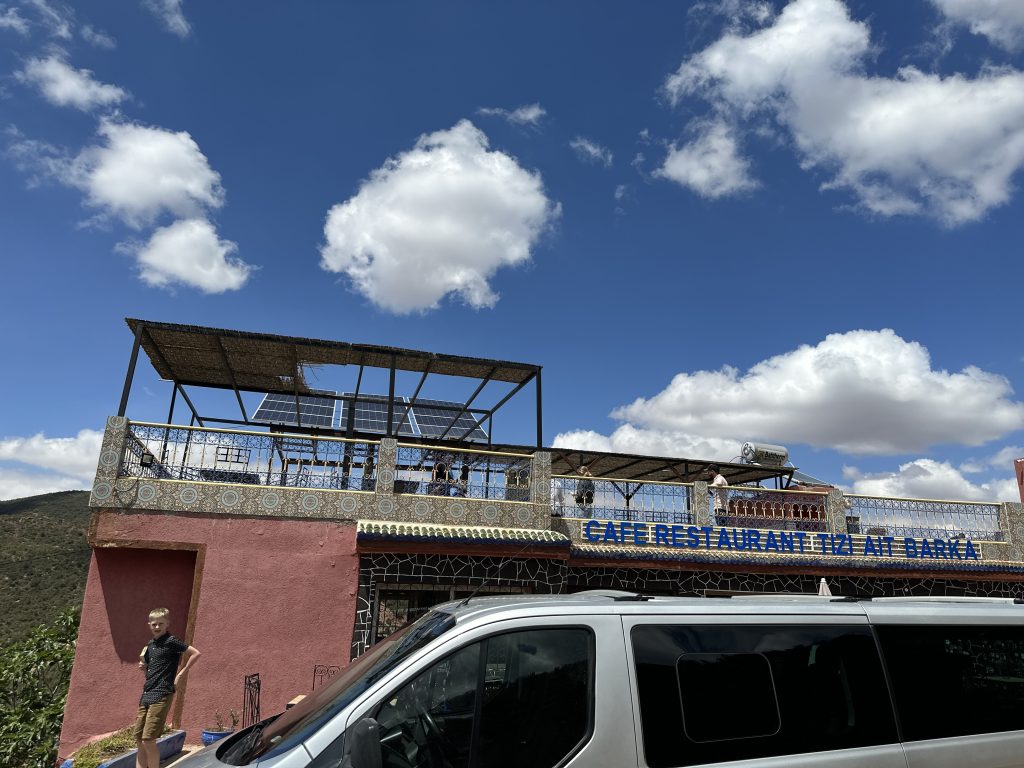

Are you dreaming of a European adventure but want the flexibility of your own wheels for an extended stay? We’ve been there! We thought we needed a long-term car rental. However, it turned out that a short-term car lease in Europe was a better fit. With this solution, we were able to travel at our own pace. In this guide, we’ll walk you through the steps to secure a short-term car lease for an extended trip, allowing you to explore Europe with ease.
When we first arrived in Europe, we knew we wanted to explore for at least a few months. As a family of seven, we also needed to have our own transportation. There is so much to see outside of the major cities, so good transportation is key. However, as we priced out rental cars, we realized that a traditional rental car is very costly for the length of time we need.
Luckily, there is an option in Europe that works great for extended journeys. It’s considered a short-term lease, but essentially, you are purchasing a European car and then selling it back. It may sound complicated (it’s not), but I’ll explain why it’s worth the effort.

*Disclaimer: This post may contain affiliate links. Opinions shared are my own, and I only endorse products I support. By clicking on any of the links below, I may get a small commission if you purchase at absolutely no additional charge to you. I appreciate your support.*
A short-term car lease in Europe is essentially a tax-free lease. The buy-back system of this program allows you to buy and use a European vehicle (Renault, Peugeot Citroën, and DS are all offered) for a few weeks to a few months. It also guarantees that the vehicle will be purchased back from you at a set date when you are finished with your agreement.
In order to qualify for this lease, you must be a full-time resident of a country outside of the EU, so this was perfect for us when we still kept our permanent residents in the US.
You are essentially entering into a short-term purchase of a new vehicle, so the level of commitment is a bit more than with a traditional short-term car rental. But the lower cost for the time you get to use the car more than makes up for the slightly larger commitment. You also get the benefit of driving a brand-new vehicle in the make, model, engine, and transmission type of your choosing. Registration and insurance are also included in your name, so there are no problems crossing borders within the EU. And to top it all off, full-risk insurance and 27/7 assistance are included.

In our experience, we knew we wanted our own transportation for our family of seven in Europe. We planned on staying in Europe and traveling around for several months, and public transportation for seven people can be a lot of money and a lot of work. We wanted the flexibility of our own transportation, but traditional car rentals were EXPENSIVE for the amount of time we needed. A short-term car lease of a Renault 7-passenger vehicle gave us the flexibility and convenience we were looking for at a reasonable cost.
Start by researching car leasing and rental options available in Europe. You may want to look into traditional rental companies as well as specialized dealers and manufacturer programs that cater to short-term leases. Compare vehicle options, pricing, length of time you are allowed to have and use the car, and terms to find the solution that aligns with your travel plans. If you need the car for less than 21 days, a traditional car rental may be a better fit for your needs. We found a short-term car lease was the best bet for us as it is ideal for non-Europeans needing a car in Europe for a 21-175-day period.

Short-term lease options to consider:
Auto Europe – Auto Europe is a reputable car rental and leasing service that offers a variety of short-term leasing options across Europe. They partner with Peugeot, DS Automobiles, and Citroën. They offer 27 leasing locations across eight countries in the EU, conveniently located at airports.
EurocarTT – This company also offers short-term leases of new Citroën and DS Automobiles vehicles for stays in Europe for up to 175 days (and up to 355 days for students). They have 30 centers across Europe.
AutoTT | TT Eurodrive – This is the company we went with when we needed a short-term car lease in 2019, as we were still US tourists (this was before we made our home in Portugal). It offers short-term Renault car leases in Europe. AutoTT will also pick you up from the airport for free!

Different leasing companies may have varying eligibility criteria. Ensure you meet the minimum age requirements, possess a valid driver’s license (consider obtaining an International Driving Permit for added convenience), and have the necessary documentation, such as proof of identity, proof of address, and potentially proof of insurance coverage.
Generally, Peugeot, Citroën, and Renault are known to lease to licensed drivers over the age of 18 and do not have a maximum age. Many traditional car rental companies only rent to drivers between the ages of 25-70 years, so this may be a helpful choice for younger or older drivers.
To qualify for the short-term tourist car lease program, you must live outside of Europe (perfect for Americans visiting Europe), and you cannot take the cars into the UK due to Brexit conditions. You may also notice that the majority of pick-up and drop-off locations for short-term car leases are in France, but you will find a handful of locations for each company outside France.
Understanding the insurance coverage included in your lease agreement is crucial. I’d recommend that you verify whether the lease comes with comprehensive coverage, including collision damage waiver (CDW) and theft protection. In our experience, the short-term lease did come with comprehensive insurance, but you may want to consider supplementing this coverage if needed or purchasing additional insurance for added peace of mind.

Given that you’ll be exploring Europe, a continent known for its expansive and diverse landscapes, it’s essential to check the mileage allowance included in your lease. Some leases may offer unlimited mileage, while others may have restrictions. You’ll want to choose an option that aligns with your travel plans to avoid unexpected charges. We found that our short-term lease included unlimited mileage, so that was a bonus for us over traditional car rentals that may have mileage limitations.
Many of the short-term lease companies say you can receive your car in as little as 15-19 days, but we found that this may lead to less choice of preferred vehicle or delay of receipt of your preferred vehicle. To secure the best rates and ensure availability, I’d recommend booking your short-term car lease well in advance. Many leasing providers offer discounts for early reservations, giving you the opportunity to save money while guaranteeing your preferred vehicle.
Before finalizing your short-term car lease, thoroughly review the terms and conditions of the agreement. Pay attention to any restrictions, additional fees, and the process for extending or modifying the lease if needed.
It’s also important to note what is expected when you return the car at the end of your lease agreement. We did not realize that we were expected to return the car washed, vacuumed, and with a full tank. I definitely recommend checking with the company you lease from to make sure you understand all the requirements for the return.

Renting or leasing a car in Europe for an extended period as an American requires careful planning and consideration. Here’s a step-by-step guide to help you navigate the process:

Navigating the process of securing a short-term car lease in Europe involves research, documentation, and consideration of your specific travel needs. However, with the right plan in place, you can embark on a memorable journey through the diverse and enchanting regions of Europe. Safe travels!
Catch great fare deals from Booking.com, Skyscanner, Kiwi.com, or Expedia
Find a family-friendly hotel in Europe from Expedia, or Vrbo, (we also love Tripadvisor and Hotels.com)
Discover more of Europe while having fun through exciting activities from GetYourGuide, Airbnb Experiences, or Viator
Get insured while traveling with World Nomads.
Want to have a family photo shoot while traveling in Europe? Book a professional photographer from flytographer.
Capture your best travel memories in Europe as we do with a GoPro, Sony camera, or our favorite drones: DJI FPV, Air, and Mini
Check out your travel necessities from a comprehensive list of all the 7Wayfinders Travel Must-Haves. Click Here!




What We Love (And Don’t Love) About Disneyland Paris
15 Amazing Christmas Dreams Come True at Gaylord Rockies, Denver, Colorado
Enjoying Ljubljana With Kids: 18 Ideas To Explore
Renting, Buying, Or Shipping A Car In Portugal

4 Comments